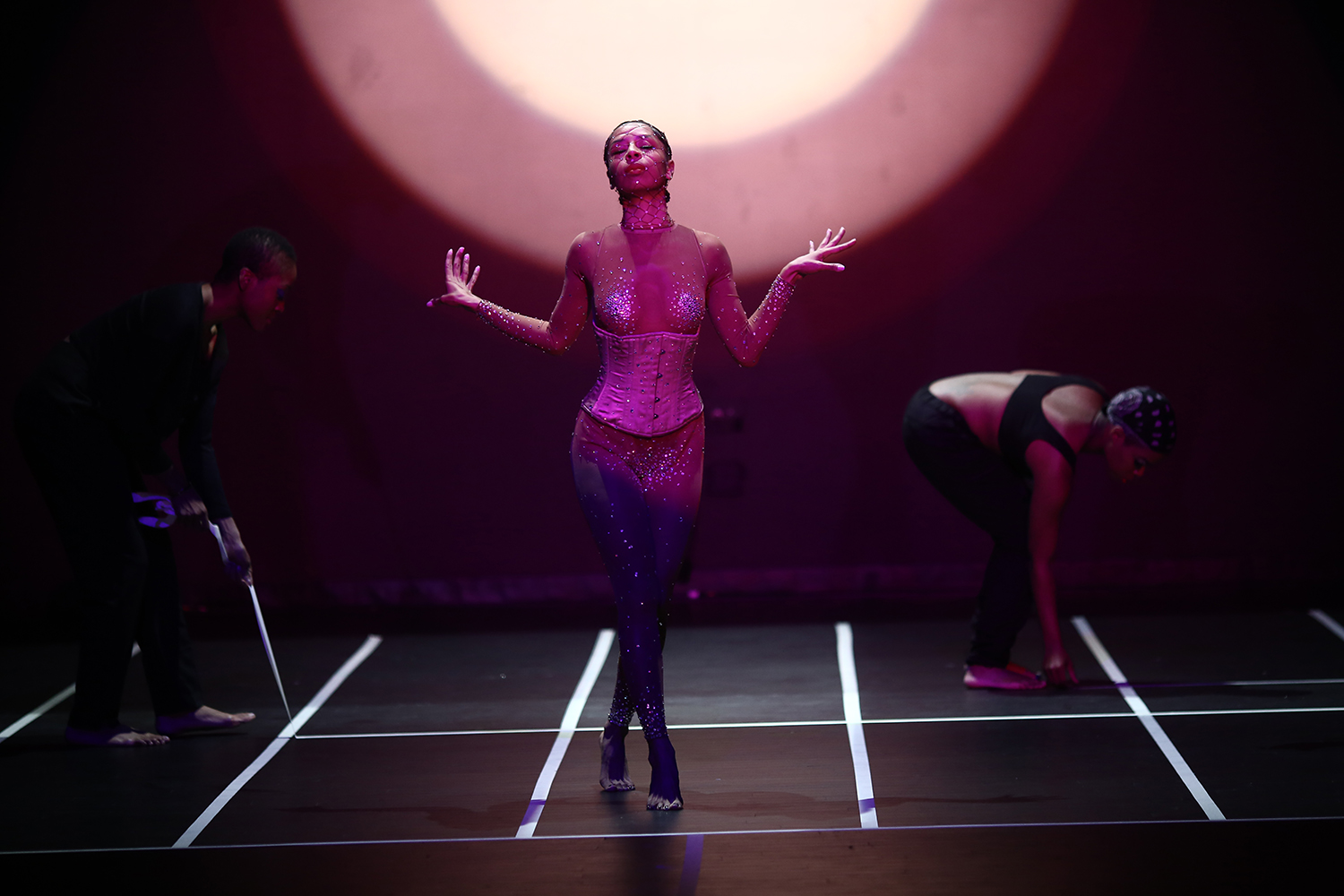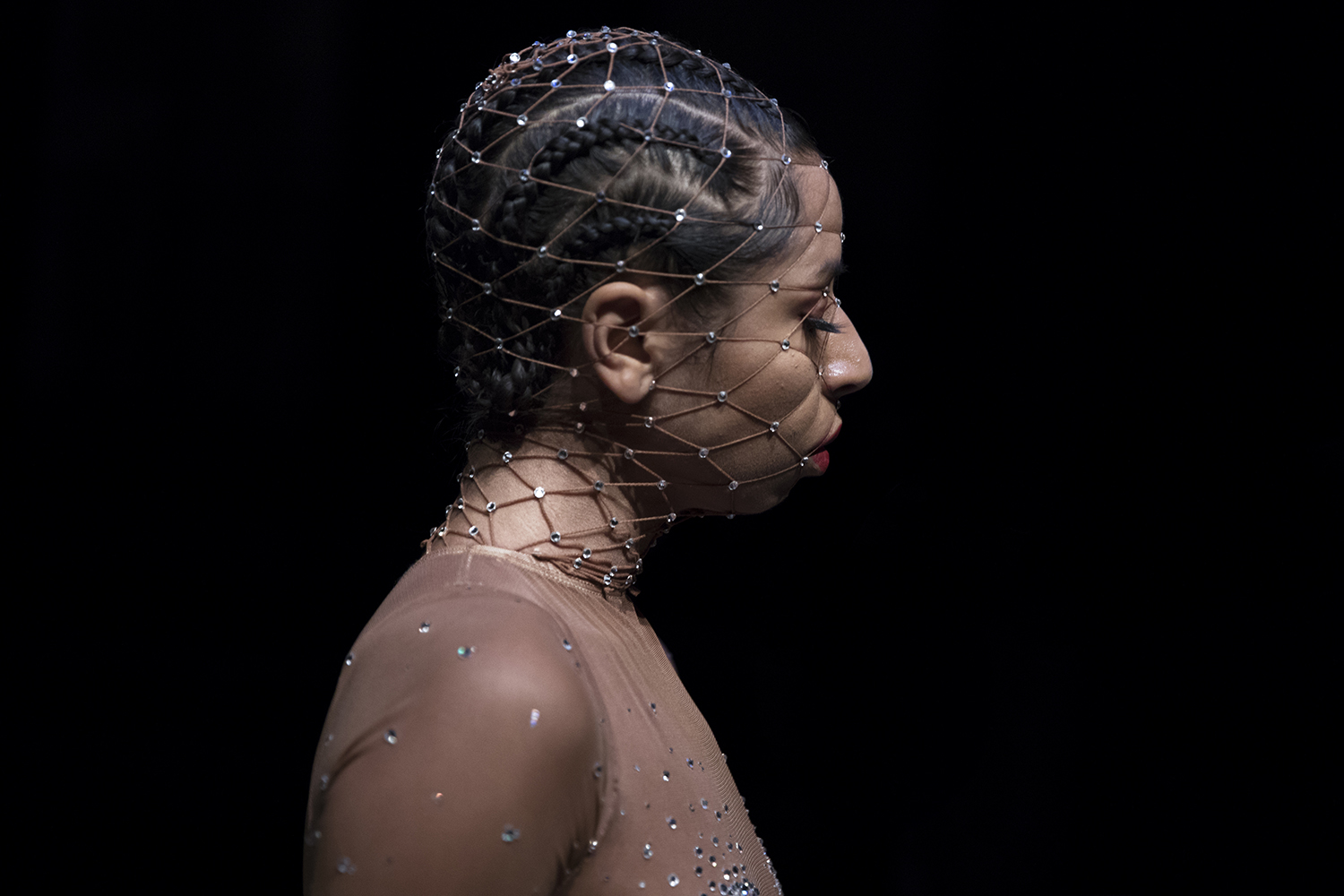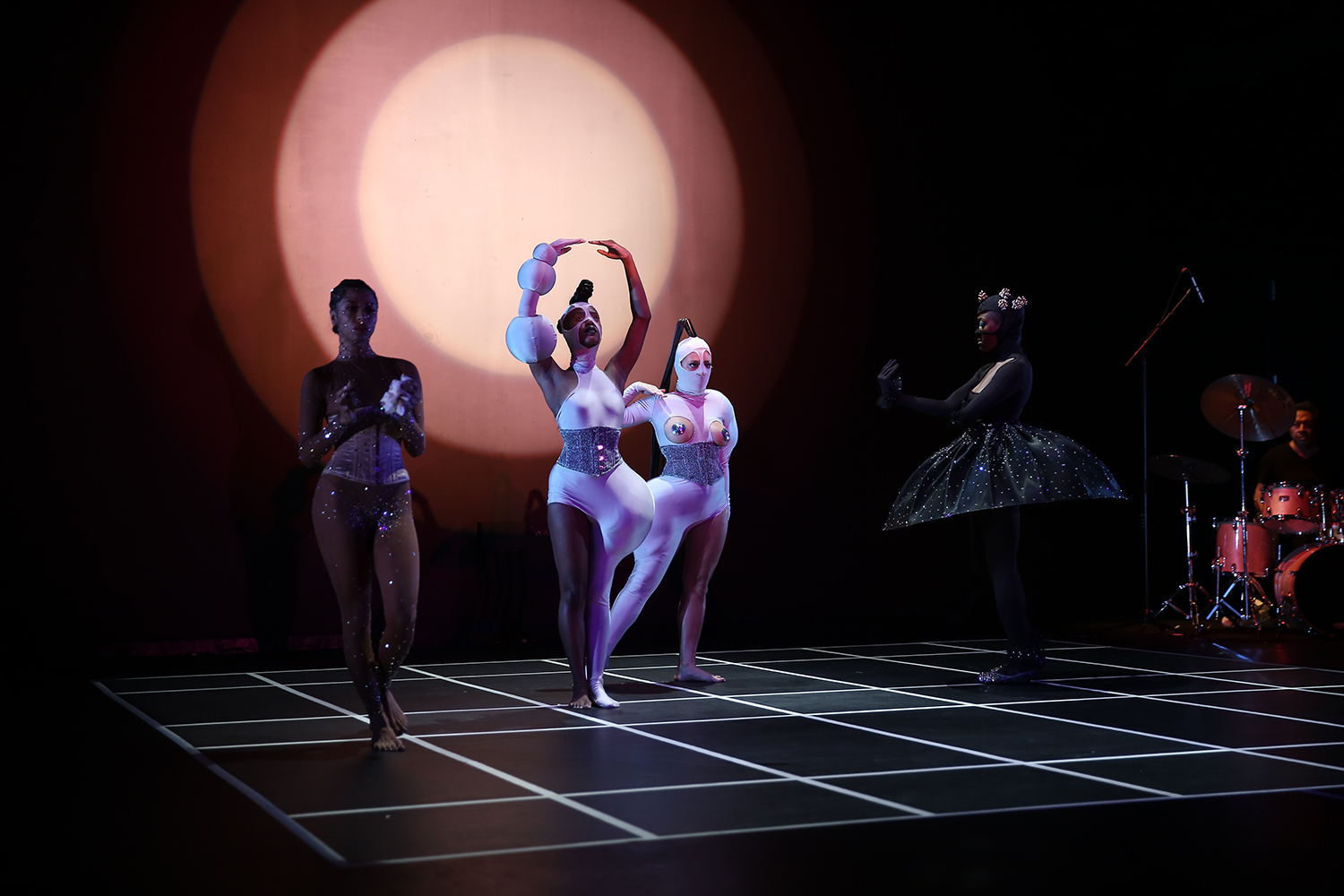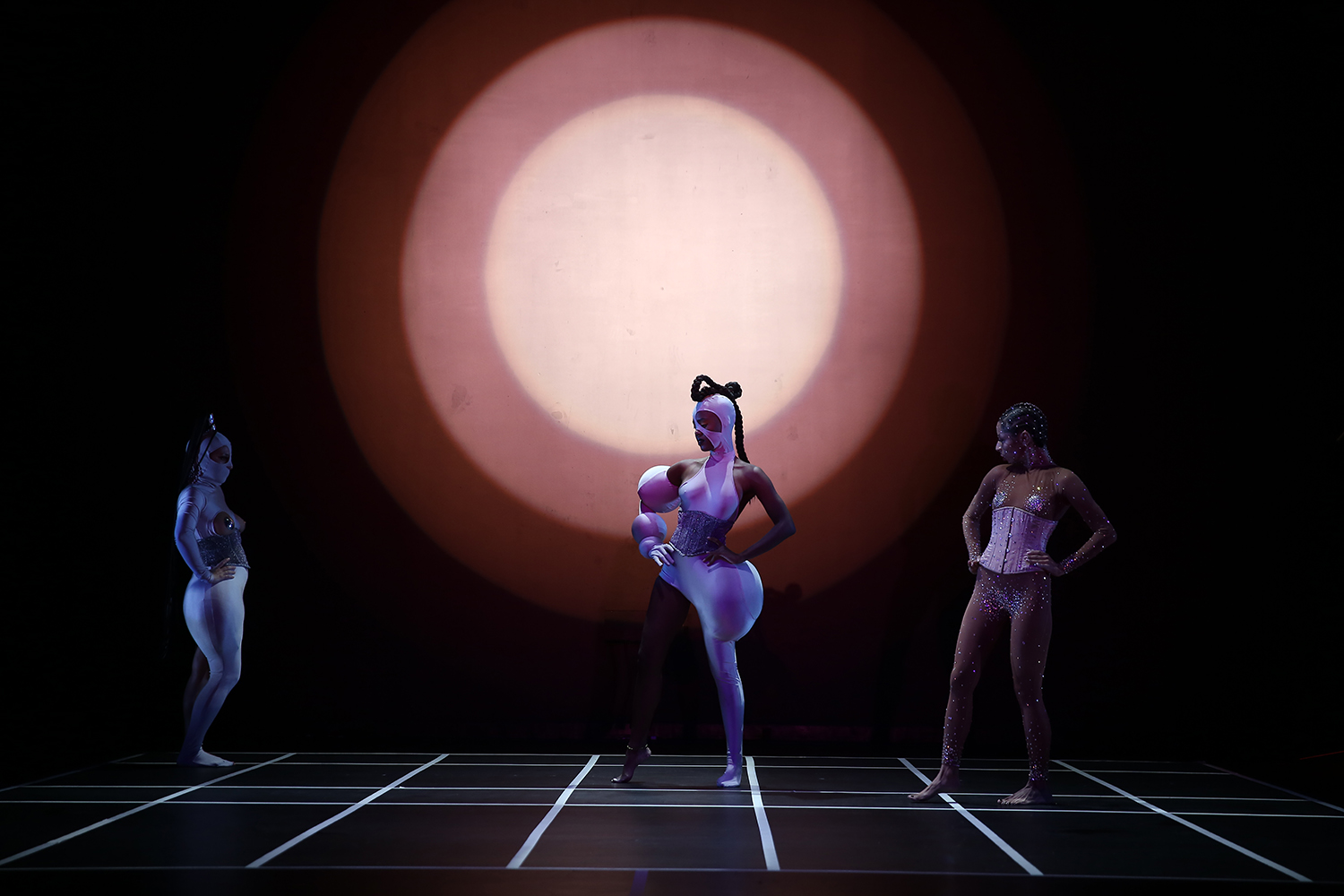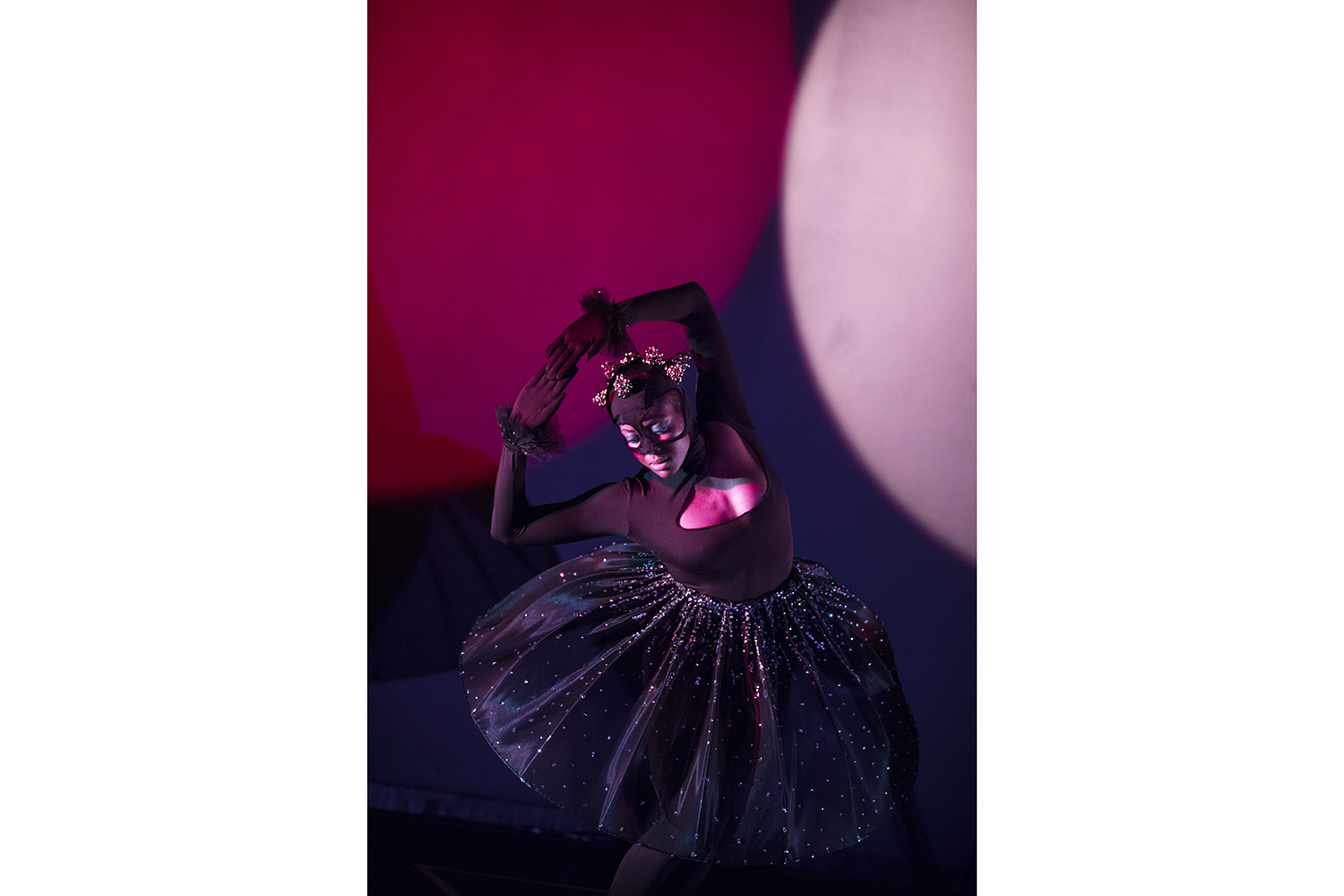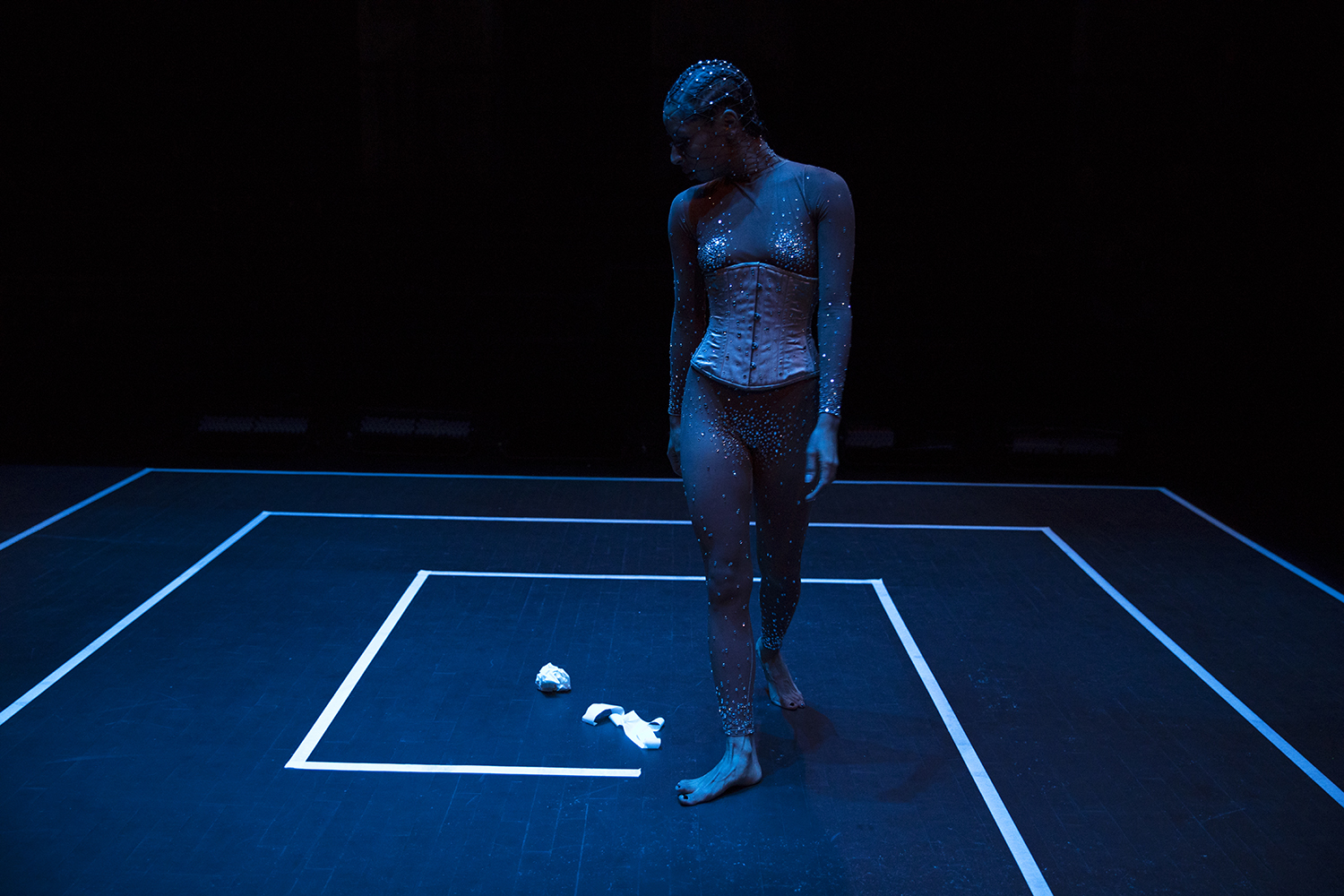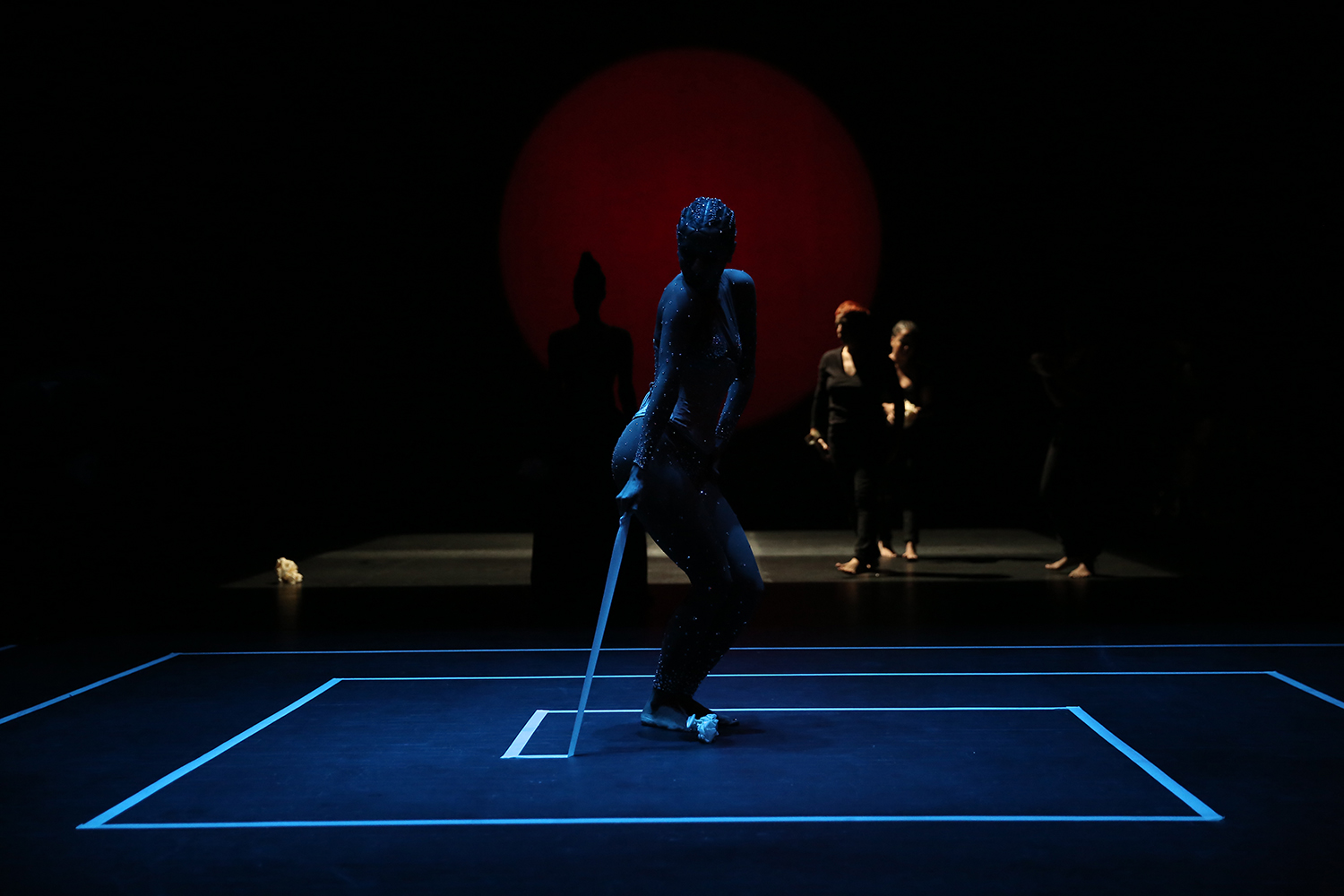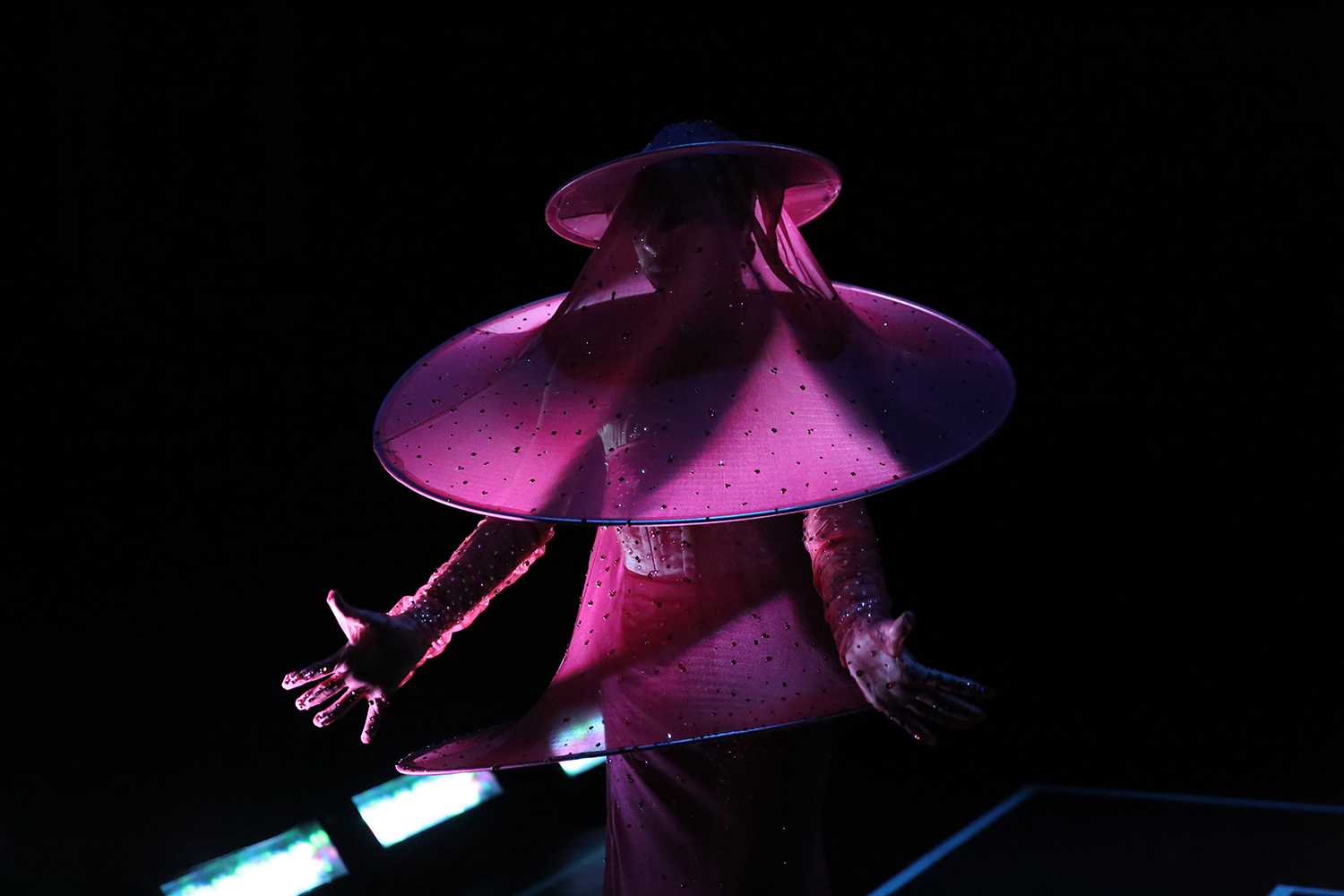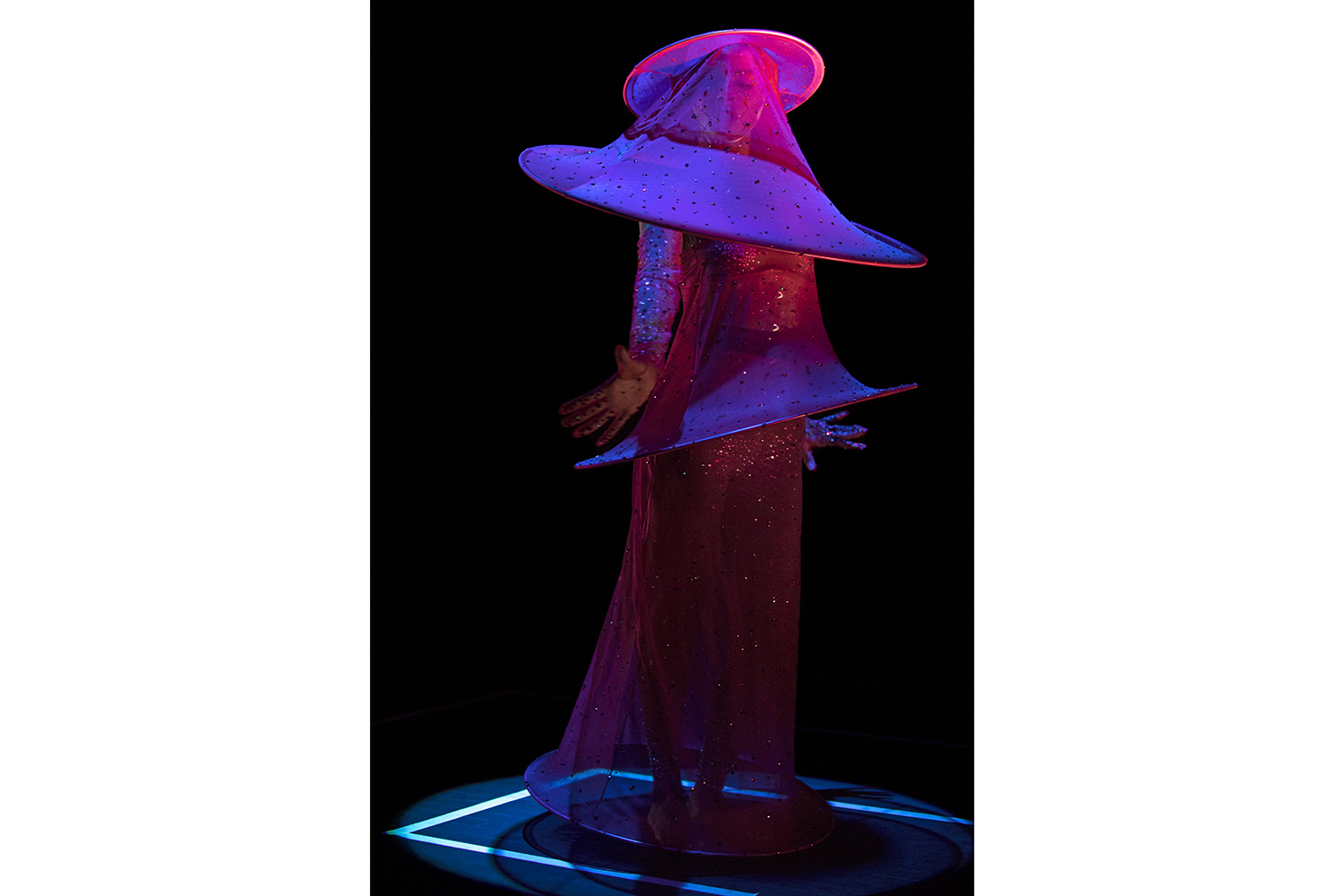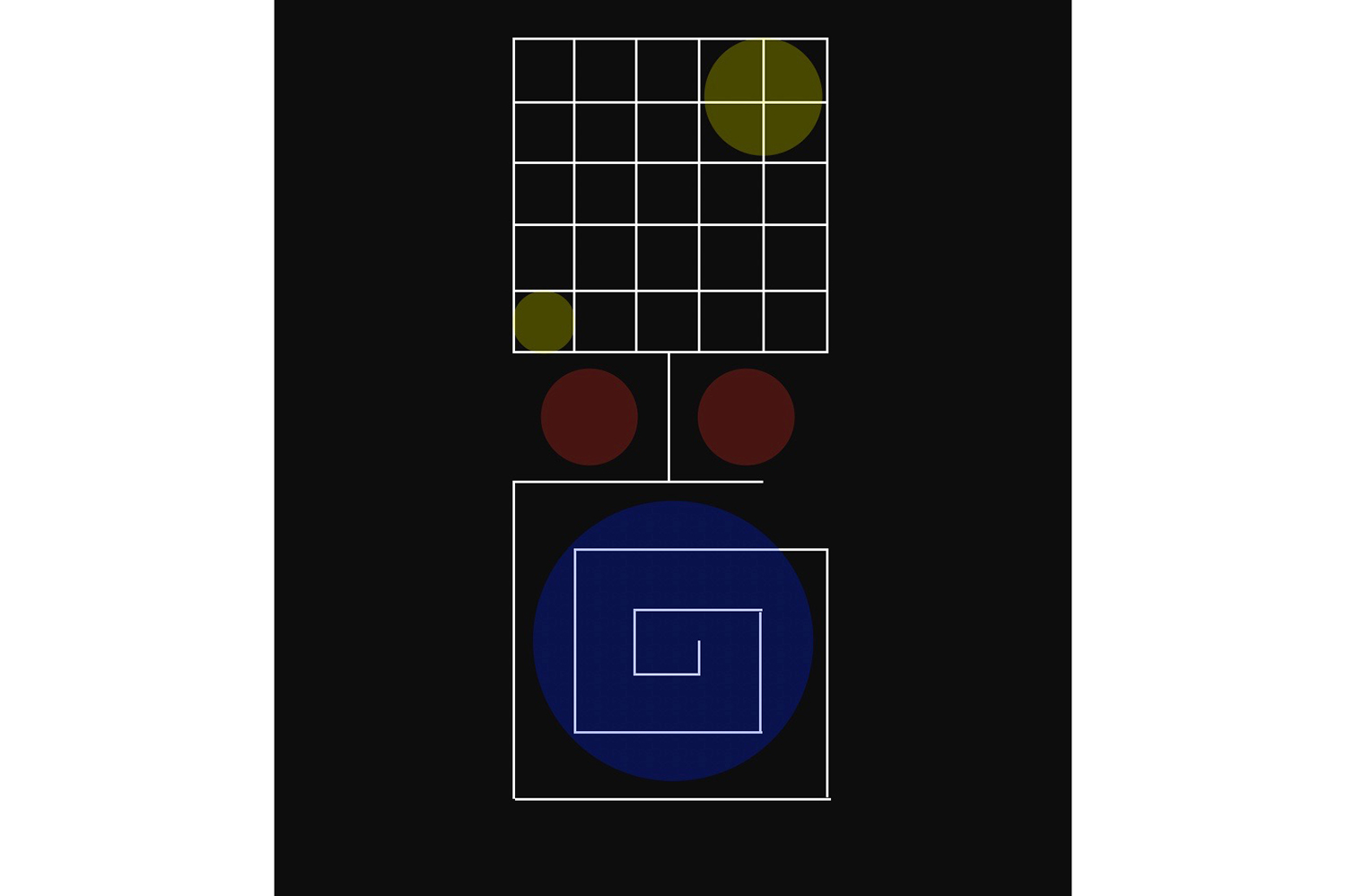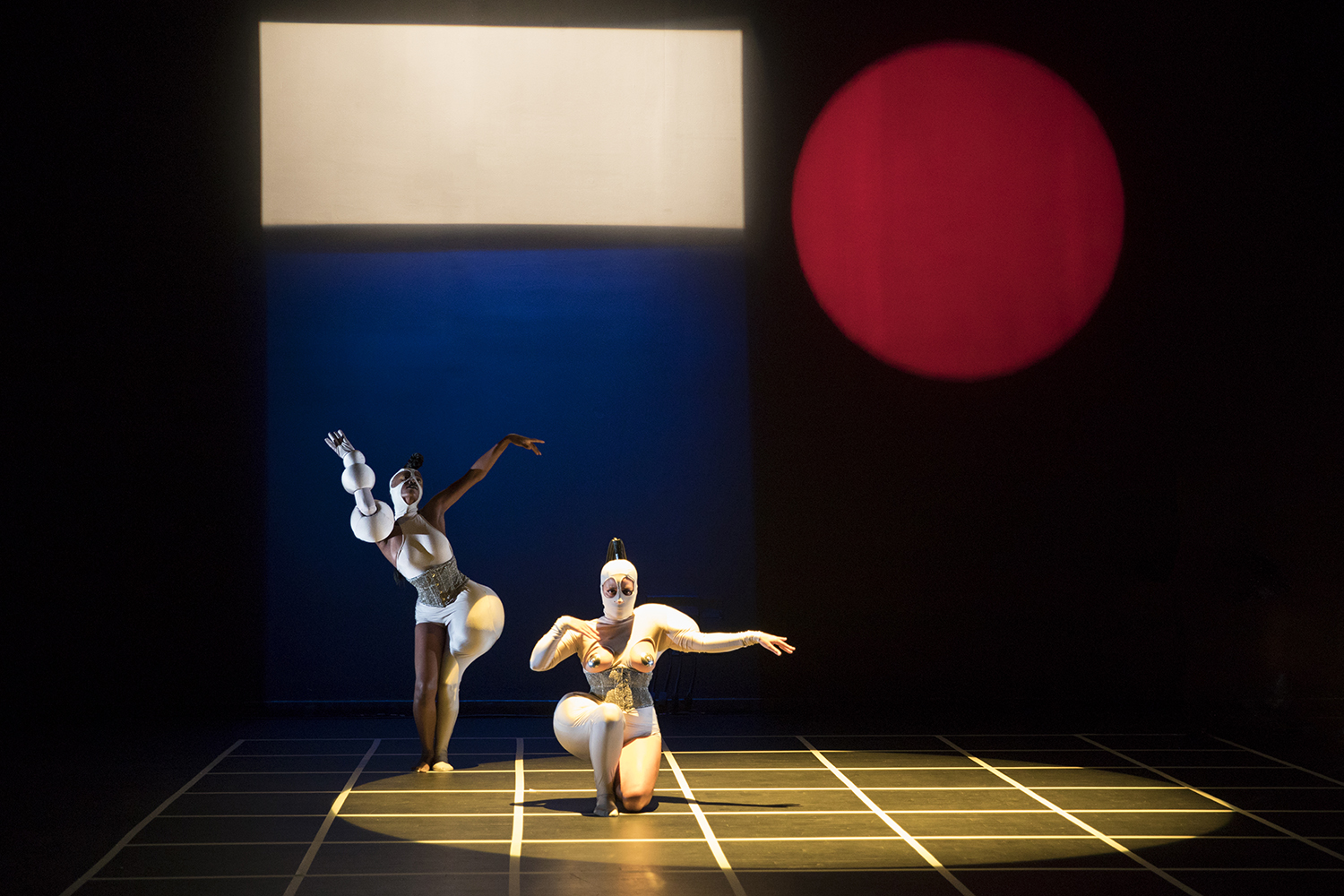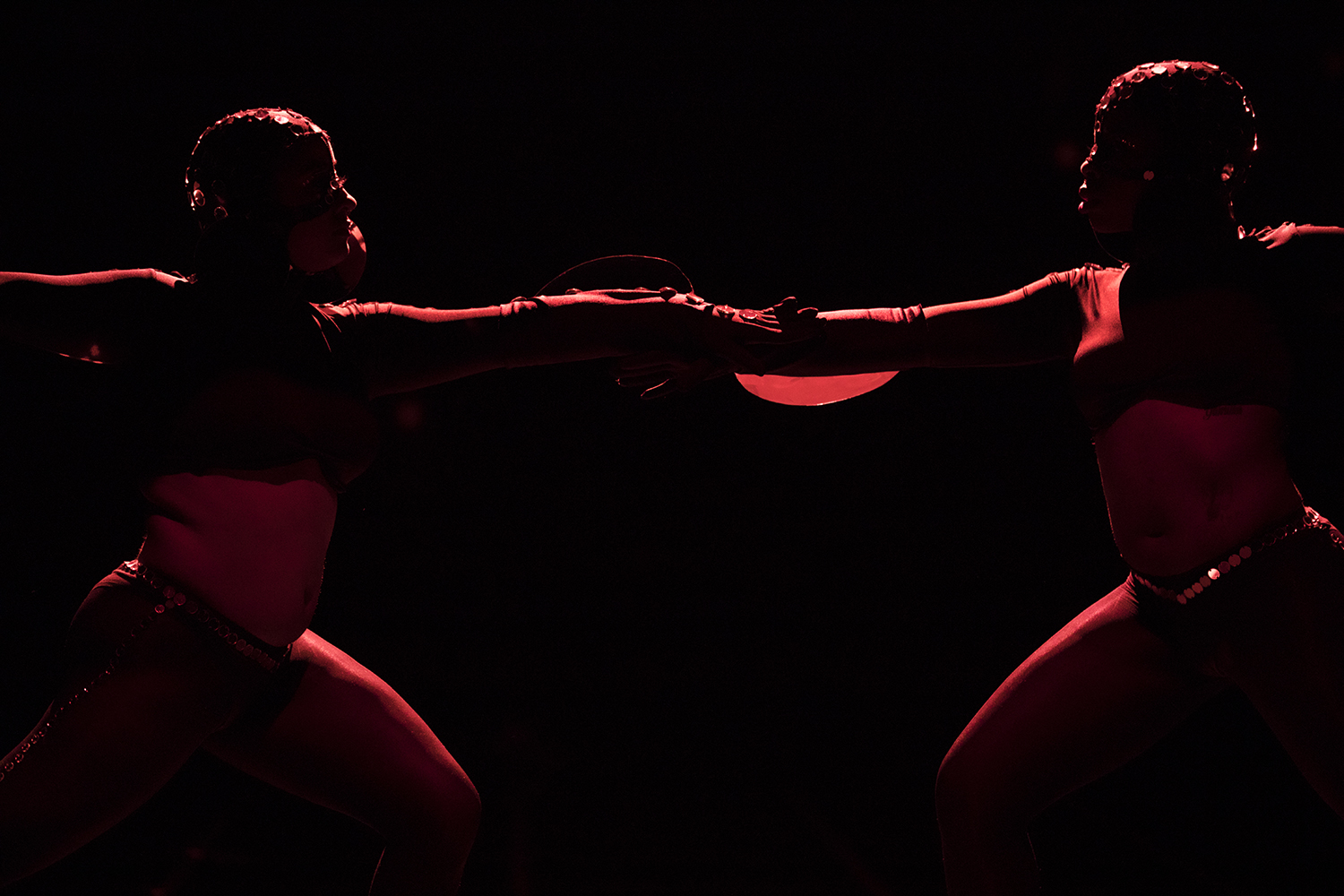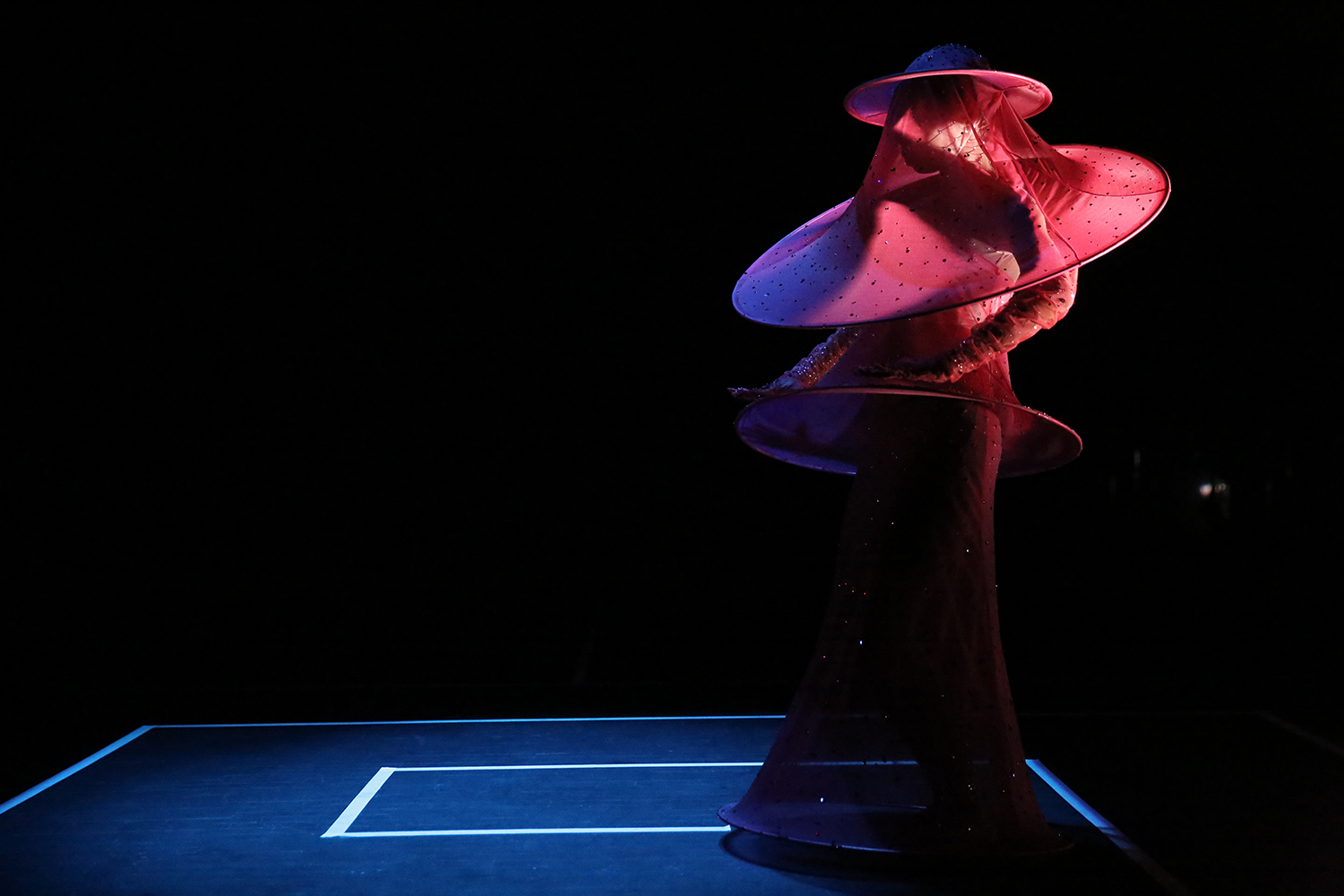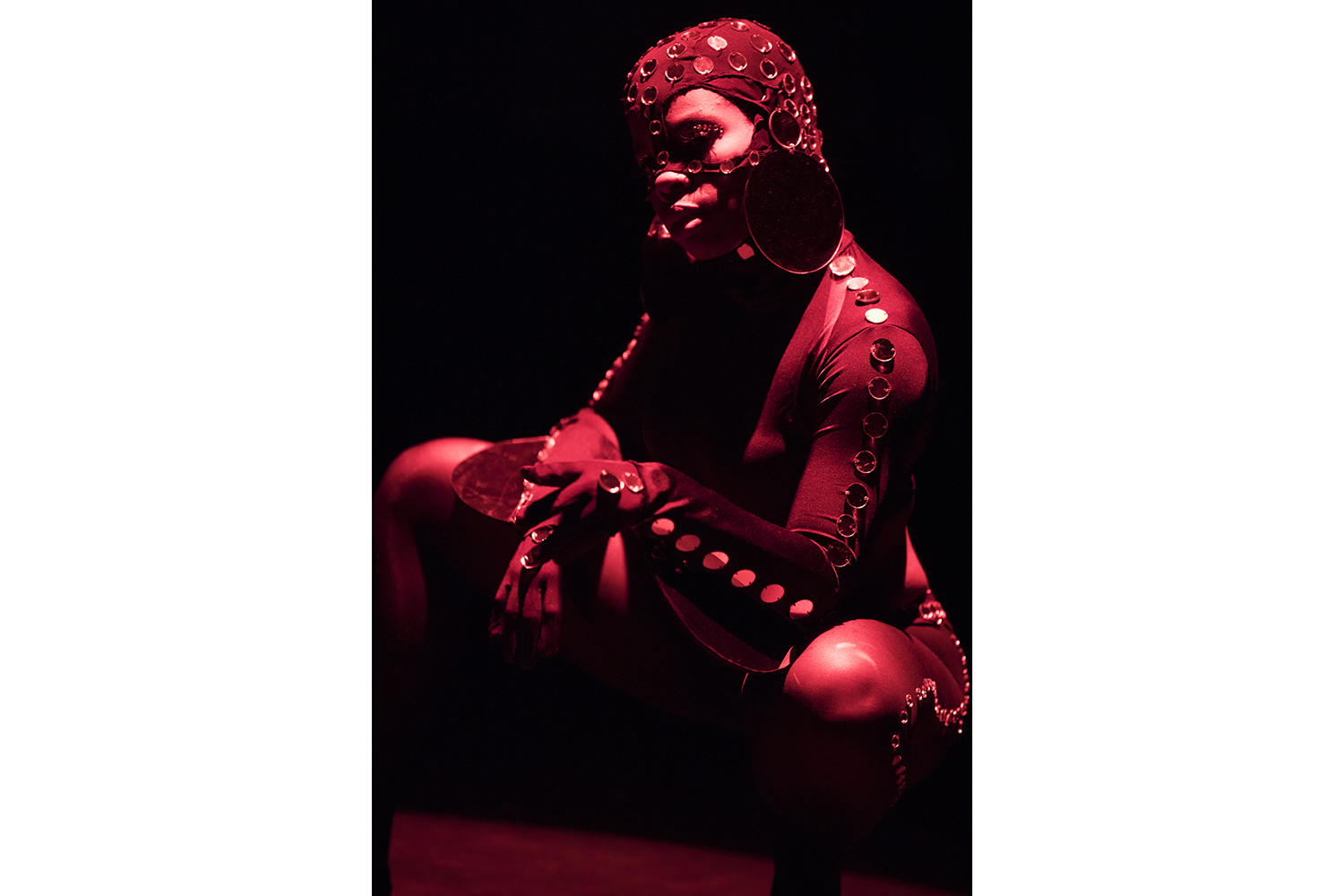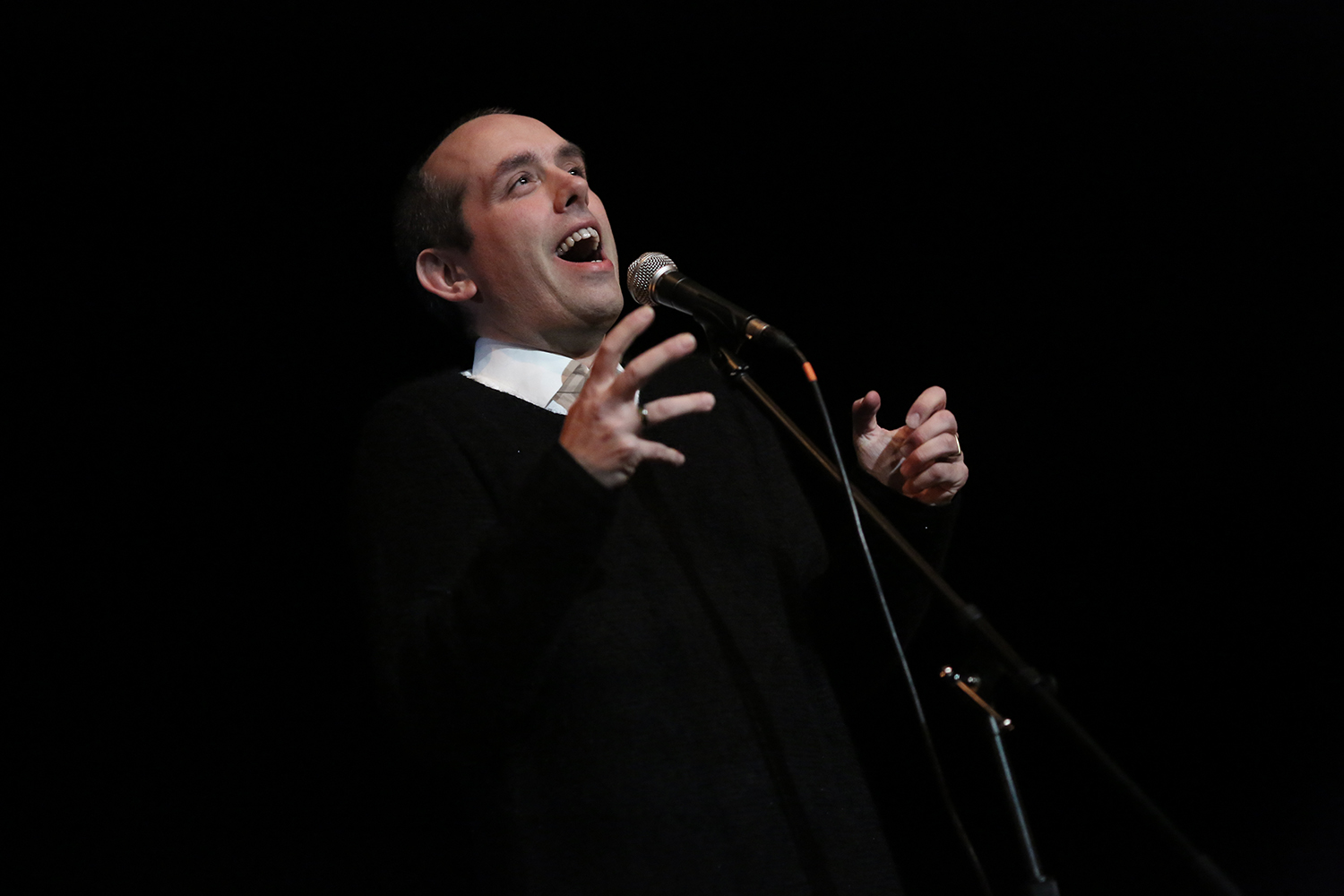A live performance co-commissioned by Performance Space New York for Performa 19, Kia LaBeija’s Untitled, The Black Act generates an opulent, attenuated version of Bauhaus impresario Oskar Schlemmer’s Das Triadische Ballett (1922), the last act of which served as LaBeija’s starting point. In her reworking, sound and light are treated compositionally, almost as figures themselves, in absorbing tableaux that tango with performers in bejeweled architectonic costumes — still as exoskeletal and unlikely as Schlemmer’s originals — designed by Kyle Luu. Motifs of line, grid, and spiral incur morphologies of movement throughout, as well as a space of cross-historical action, wherein LaBeija and her collaborators riff and renew Schlemmer’s now iconographic mystique with their own.
Emma McCormick Goodhart: What drew you to Oskar Schlemmer’s Triadic Ballet, of which (perhaps liberatingly) little documentation remains? Is there a kind of historical vogueing here?
Kia LaBeija: I came across Bavaria Atelier GmbH’s 1970 filmed adaptation of Das Triadische Ballett during my research period for Performa 19. Much of Untitled, The Black Act directly references this iteration of Schlemmer’s work. My initial excitement was toward the use of a large grid throughout the three acts as a recurring theme. I felt a strong compassion towards it — understanding that it represented possibility and chance. It felt very human to juxtapose the large marionette-like figurines that traveled within it. The final act, also known as The Black Act, struck me as being more narrative than parts one and two. I felt a connection to it. I saw myself in it. It felt relevant, timeless, powerful, and intelligent. I was inclined to use its structure as a guide to build a live transformative experience. I had a willingness to work through each of its four parts to honor my personal journey and relationship to the shifts I’m currently experiencing.
EMG: Untitled, The Black Act begins in prolonged darkness, with only strong, lush sounds. How did you evolve the score, and how do healing frequencies come in via your brother Michael’s synthesizer?
KL: The score was built very organically. It was developed slowly throughout the workshopping process in great collaboration. I asked my brother, Kenn Michael, to come onboard this project and use RESHI, his software sound instrument that uses sacred frequencies, to activate the work. Music is one of the oldest forms of communication, and I wanted the performers and audience alike to feel penetrated by sound that would not only move them in an auditory way but also in a spiritual way. Each section of The Black Act utilizes specific tones to awaken the chakras. We let the tone of the root chakra play for fifteen minutes at the beginning of each night to help ground everyone in the room.
EMG: Tell us about your diagrammatic, painterly use of light, and how that light further dresses Kyle Luu’s costumes, which seem to simultaneously constrain, frame, and force movement.
KL: There are so many elements and so many conscious decisions that went into the work. I allotted a very large chunk of time to develop all sections, separately, in order to allow them the space to also realize themselves. For the lighting, I created a digital image of how I imagined the stage would look from above. I needed to see it in its entirety as its own work of art. All of my shapes (the spiral, the singular line, and the grid) are dressed in circles of blue, red, and yellow. I brought this image to our fantastic lighting designer, Christina Tang, and she imagined what this world could look like. She used her artistry to bring my simplistic ideas to life and expand on them. Kyle Luu made smart designs, exaggerating the body, re- imaging silhouettes, reinforcing shapes while keeping in mind how they would be brought to life with lights. She thought about how fabrics would soak in colors. Many of the costumes were also embellished with Swarovski crystals or mirrors — this idea of reflecting light as a metaphor for all of the performers being reflections of each other. Together they helped create this world, a world I feel I only experience in the depths of my thoughts.
EMG: How do you use visual metrics, including those of the grid and the spiral on the stage floor, as choreographic or structuring devices? Do these run parallel to the geometries of a runway or ballroom space?
KL: The shapes are presented as a geography in which the performers are invited to find their own way through. Instead of isolating these shapes and looking at them as separate from each other, as in Bavaria Atelier GmbH’s interpretation, I wanted them to be one singular map. Each structure represents a challenge that must be broken through to move to the next.
EMG: In what ways is the motif of the spiral important to the piece? Is it a spatial or conceptual guide?
KL: The spiral is a signifier of an ending and a new beginning. A realization of self, an awakening. Spirals are prompted by action like ripples. Spirals can move inward and outward. It is up to us to decide which way to take it. For me, I’ve been a spiral for a long time, but recently I’ve been on a journey of unraveling. There are many things you’ll come across during the period of unraveling, all of which are expressed throughout the rest of the piece. Every other shape within the framework of The Black Act is also a representation of what I’ve experienced throughout my journey through the spiral.
EMG: Tell us about the visually and aurally powerful gesture of tape being pulled off.
KL: What is more terrifying yet satisfying than to build something for so long and then one day to decide it no longer serves you — to break it down and start fresh? Throughout the process of building my own map, dictating my direction, I made a very conscious decision that the only way to signify its ending was to start anew. You’d be surprised how attached you can get to masking tape on a flat surface. The first time I had to take it up, I felt so emotional about it. I didn’t want to let go. I felt I had spent so much time working within it that it had become a piece of me. I also realized during the process that that was the work within itself: to build, to break down, to repeat.
EMG: Where do you move furthest away from Schlemmer?
KL: Life experience. We’ve both created works looking at the world we live in, but we have lived in different and separate worlds.


